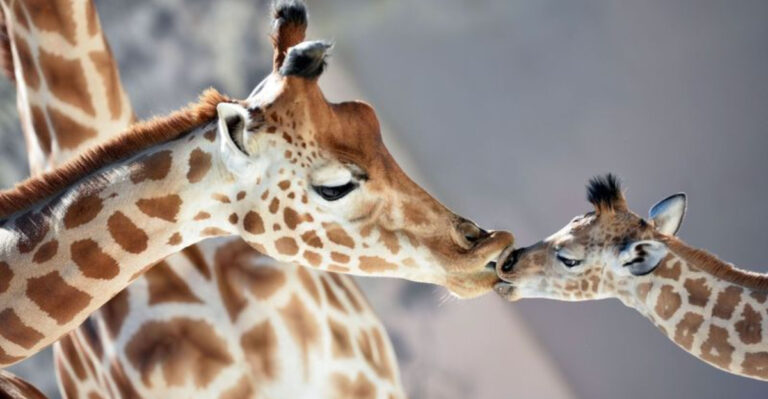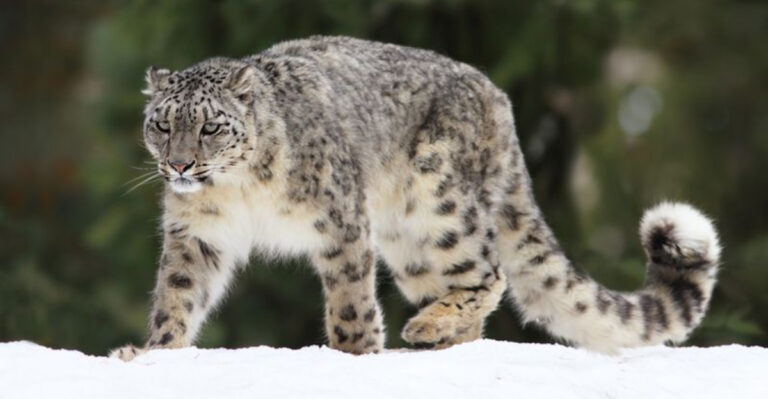23 Dinosaurs With Long Necks
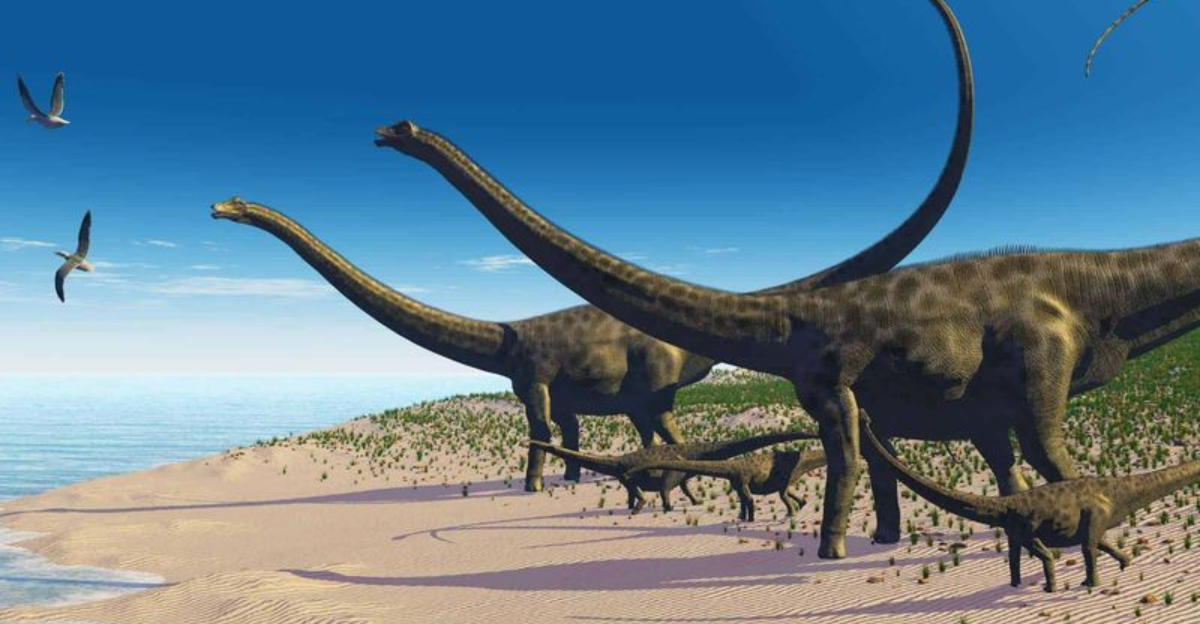
Dinosaurs were huge, and the long-necked ones? Even bigger! Imagine standing next to one – it’s a bit mind-blowing, right?
Let’s dive into of these awesome giants, each with its own cool story. Ready to travel back in time and meet these necks that could reach the sky? Let’s go!
1. Platyosaurus
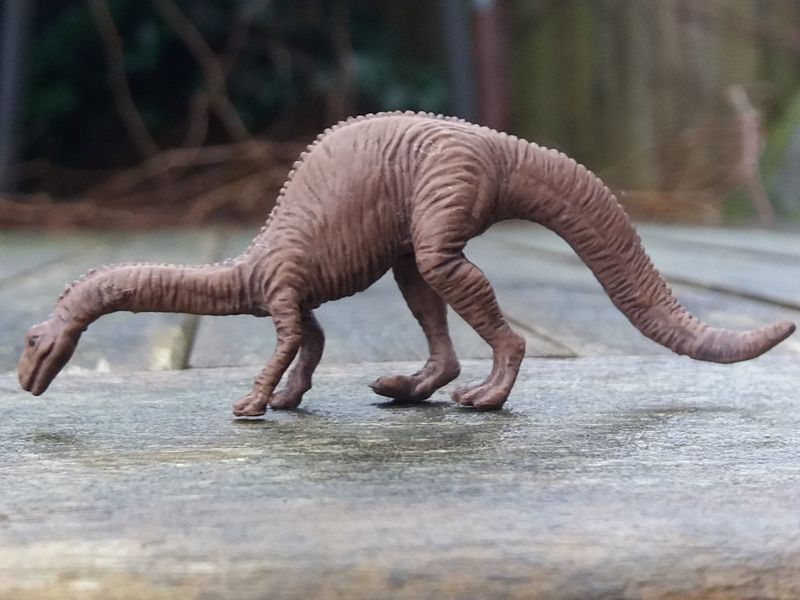
The Platyosaurus is a fascinating creature from the Triassic period, known for its elongated neck and robust body.
As one of the earliest long-necked dinosaurs, it paved the way for its more famous descendants. With its strong limbs, it could move with surprising agility.
Despite its size, the Platyosaurus primarily feasted on plants, using its long neck to reach high vegetation.
Its social behavior and habitat choices remain a subject of curiosity among paleontologists. Today, its fossils offer vital clues into the lives of early sauropodomorphs.
2. Miragaia
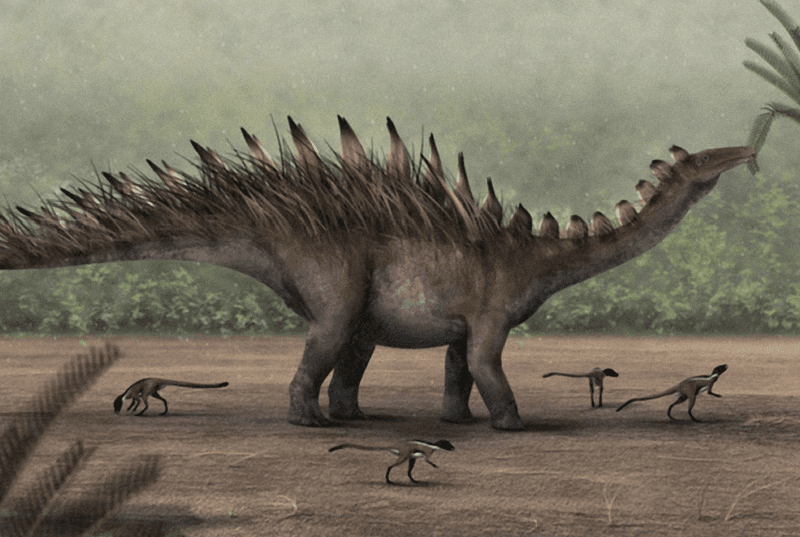
Miragaia is an intriguing stegosaur, distinguished by its unusually long neck.
Found in what is now Portugal, this dinosaur challenges the classic image of stegosaurs. Its neck, which contains more vertebrae than most of its relatives, allowed it to access varied foliage.
This adaptation likely gave it an edge in its ecosystem, letting it explore different food sources.
Miragaia’s discovery has broadened scientists’ understanding of stegosaur evolution. Its sleek body and defensive plates add to its unique profile, making it a subject of ongoing study.
3. Brachiosaurus
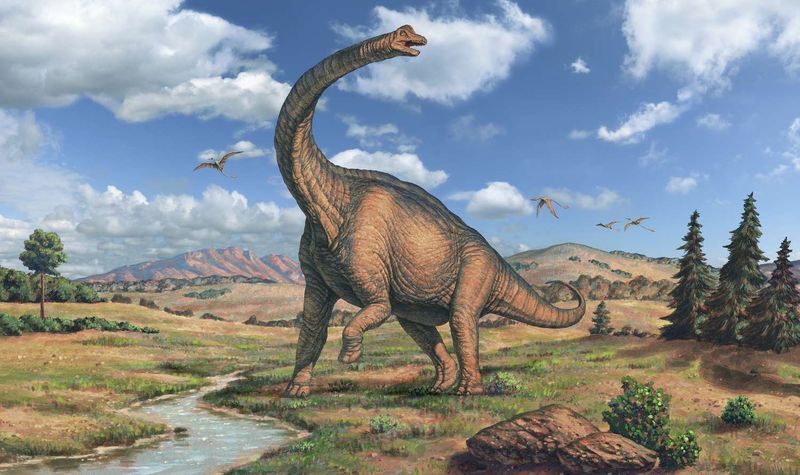
Brachiosaurus is one of the most famous long-necked dinosaurs, known for its gigantic size and unique features.
Living during the Late Jurassic period, it had front legs longer than its hind legs, giving it a sloped back that helped it reach high up into trees for food.
Its long neck made it a master of munching on tall vegetation, while its massive size likely kept predators at bay.
Despite its intimidating appearance, Brachiosaurus probably had a small head and was a gentle giant. Its impressive neck and robust heart make it a true marvel of the dinosaur world!
4. Apatosaurus
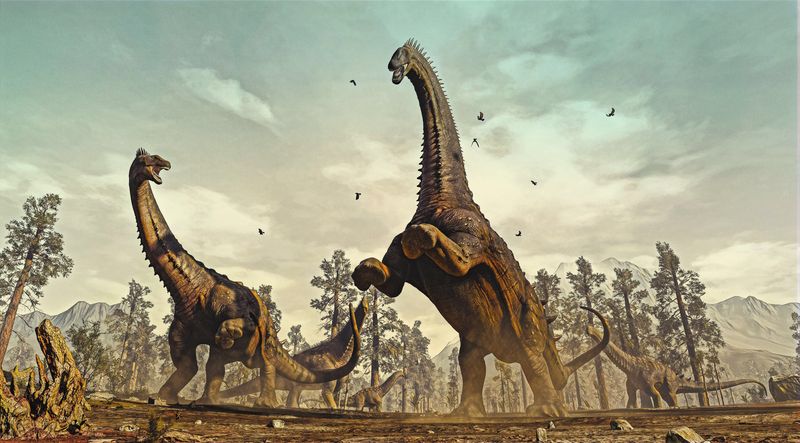
Apatosaurus, often mistaken for Brontosaurus, was a huge long-necked dinosaur from the Late Jurassic period, reaching lengths of up to 75 feet!
With its strong neck and whip-like tail, it could graze on plants both low to the ground and high in the trees, without needing to move its massive body much.
The name “Apatosaurus” means “deceptive lizard,” a nod to early paleontologists’ mix-up with its classification.
Despite its size, it was likely a gentle giant, moving in herds for protection from predators. Its adaptability and sheer size make Apatosaurus a captivating dinosaur for enthusiasts!
5. Diplodocus
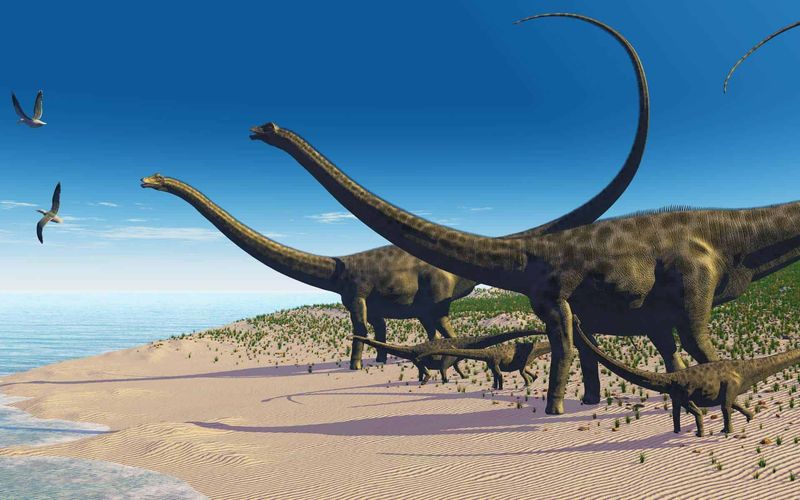
Diplodocus is another legendary long-necked dinosaur that roamed North America during the Late Jurassic period.
Its name, “double beam,” refers to its unique skeletal structure, and it could grow up to 90 feet long, making it one of the longest dinosaurs known!
With its long neck, Diplodocus could efficiently sweep across vast areas of vegetation, feeding on a variety of plants. Its lightweight build allowed it to move surprisingly gracefully for such a giant.
The whip-like tail may have been used for communication or defense, and like many other dinosaurs, Diplodocus likely traveled in herds for safety.
6. Brontosaurus
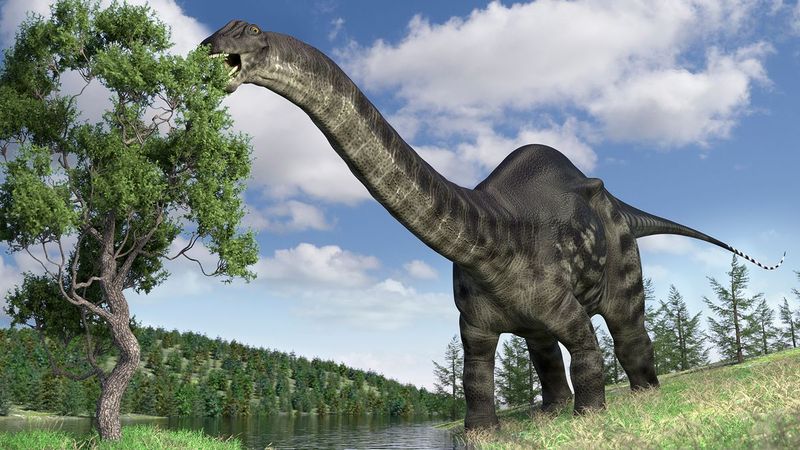
Brontosaurus, known as the “thunder lizard,” is a beloved long-necked dinosaur that once roamed North America’s forests and floodplains.
While similar in appearance to Apatosaurus, Brontosaurus had subtle differences, including a long neck that helped it reach a wide variety of plants as an efficient herbivore.
Growing up to 72 feet long, it had a heavy body and a whip-like tail.
Likely living in groups for protection and companionship, Brontosaurus was once thought to be sluggish, but modern interpretations suggest it was more active and could move quickly when needed.
With its combination of strength and grace, Brontosaurus continues to capture the imagination of dinosaur fans everywhere.
7. Camarasaurus
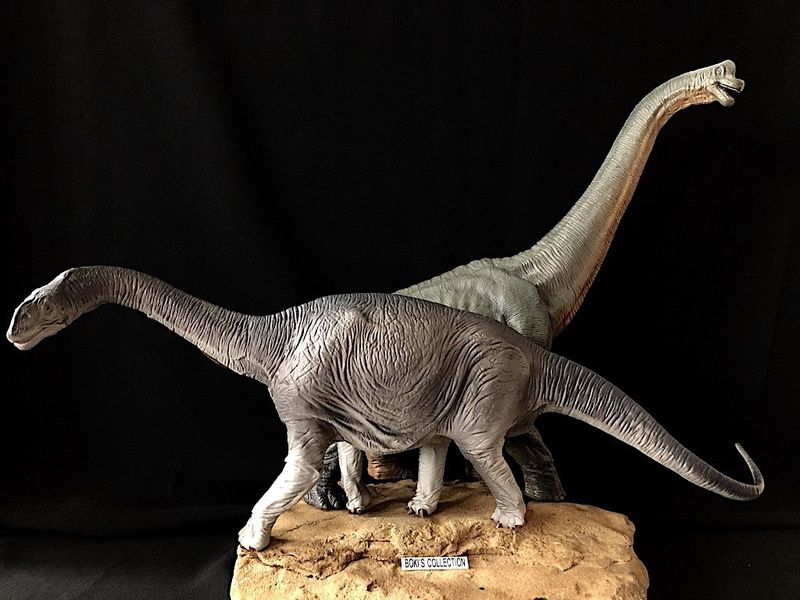
Camarasaurus was a robust, long-necked dinosaur from the Late Jurassic period, known for its strong, sturdy build.
Unlike some of its relatives, it had a shorter neck, but it was incredibly efficient at feeding on a variety of vegetation.
Its name, meaning “chambered lizard,” refers to the hollow chambers in its vertebrae, which helped reduce weight while maintaining strength.
Growing up to 60 feet long, Camarasaurus had a compact body that made it agile for its size.
A social animal, it likely traveled in herds, showcasing complex social behaviors, and its adaptability to different environments made it a successful species.
8. Mamenchisaurus
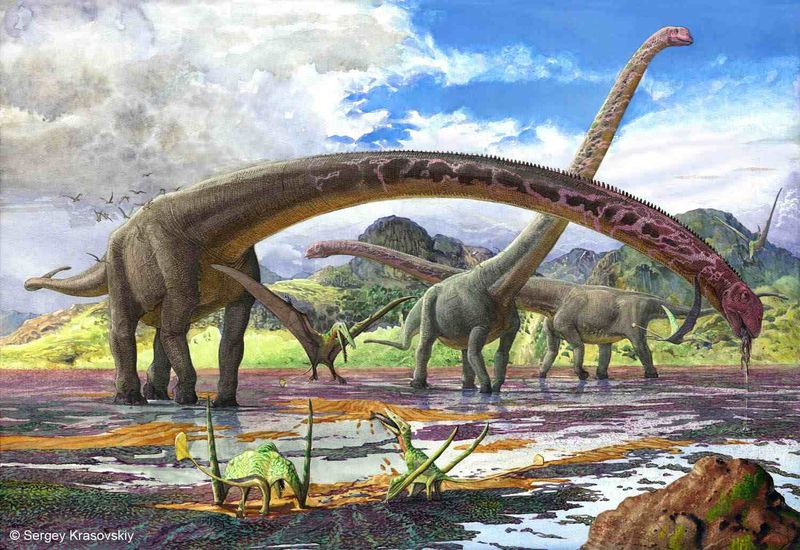
Mamenchisaurus is famous for having one of the longest necks of any dinosaur, with some species boasting necks up to 33 feet long!
This unique dinosaur lived during the Late Jurassic period in what is now China.
Its long neck was supported by a complex system of bones and muscles, allowing it to reach high into trees to feed on leaves and soft vegetation, which helped it thrive in its lush environment.
Despite its impressive neck, Mamenchisaurus had a relatively small body compared to other sauropods, making it agile in its habitat.
Its extraordinary neck continues to fascinate scientists, offering valuable insights into the evolution of long-necked dinosaurs.
9. Alamosaurus
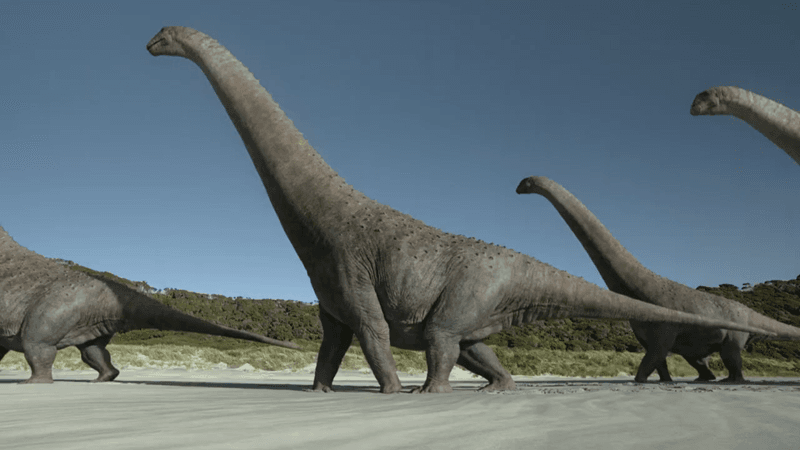
Alamosaurus was a massive, long-necked dinosaur that roamed the southwestern United States during the Late Cretaceous period.
Its name comes from the Ojo Alamo Formation, where its remains were first found. As one of the last surviving sauropods before the mass extinction event, Alamosaurus could reach lengths of up to 100 feet.
Its long neck helped it feed on sparse vegetation in its arid environment, showcasing its adaptability.
10. Giraffatitan
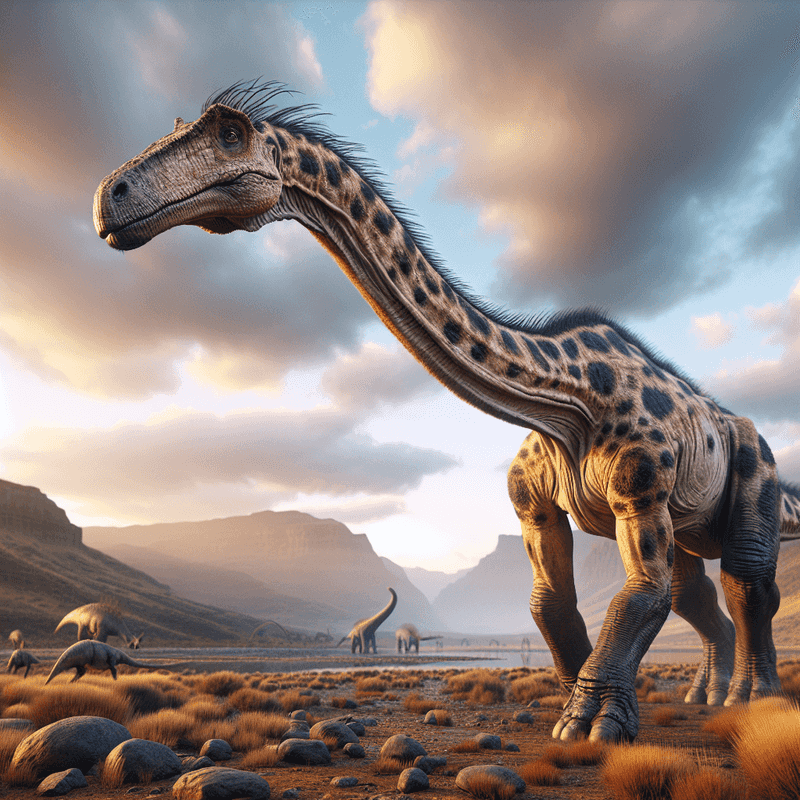
Giraffatitan, as its name suggests, had a neck similar to a modern giraffe—only much larger! This massive dinosaur lived during the Late Jurassic period and was once thought to be a species of Brachiosaurus.
Its towering legs and long neck allowed it to browse high vegetation, reaching food sources that other herbivores couldn’t access.
Standing nearly 40 feet tall, Giraffatitan dominated the landscape, leaving an awe-inspiring impression.
Its sheer size and unique build continue to fascinate scientists, showcasing the incredible engineering of nature that allowed such giants to thrive.
11. Euhelopus
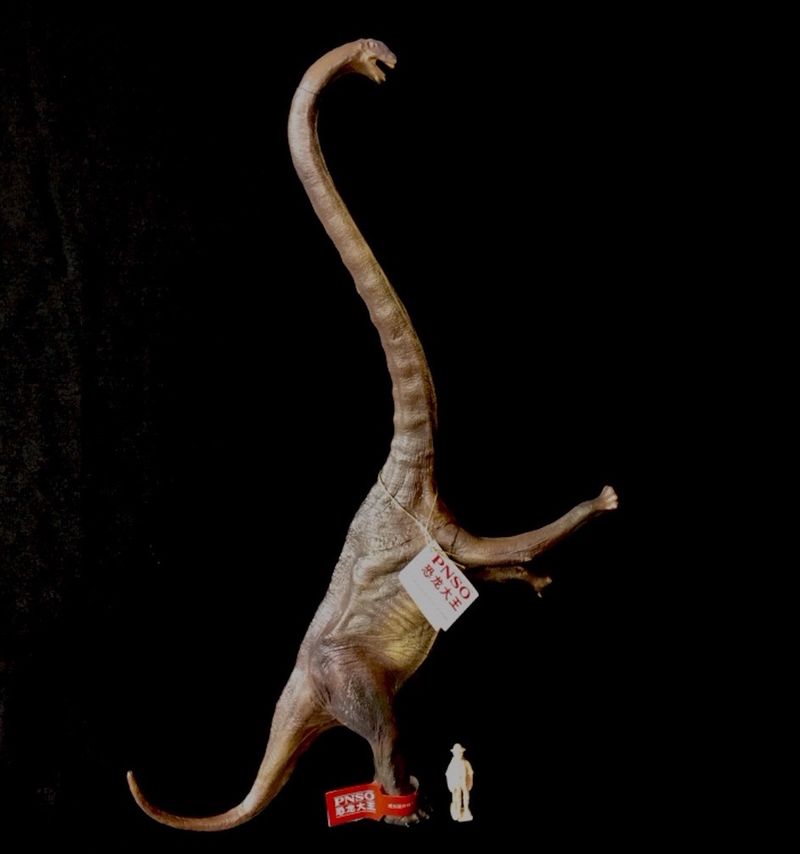
Euhelopus, a Chinese dinosaur from the Early Cretaceous period, was known for its long neck and graceful appearance.
Living in marshy, riverine environments, its long neck allowed it to feed on both terrestrial and aquatic plants, offering a diverse diet for its growth and survival.
Compared to other sauropods, Euhelopus had a more slender build, making it agile in its habitat. Its ability to thrive in such a unique environment highlights the diversity and innovation of dinosaur evolution.
Euhelopus remains an intriguing subject for paleontologists studying the ecological roles of sauropods.
12. Jobaria
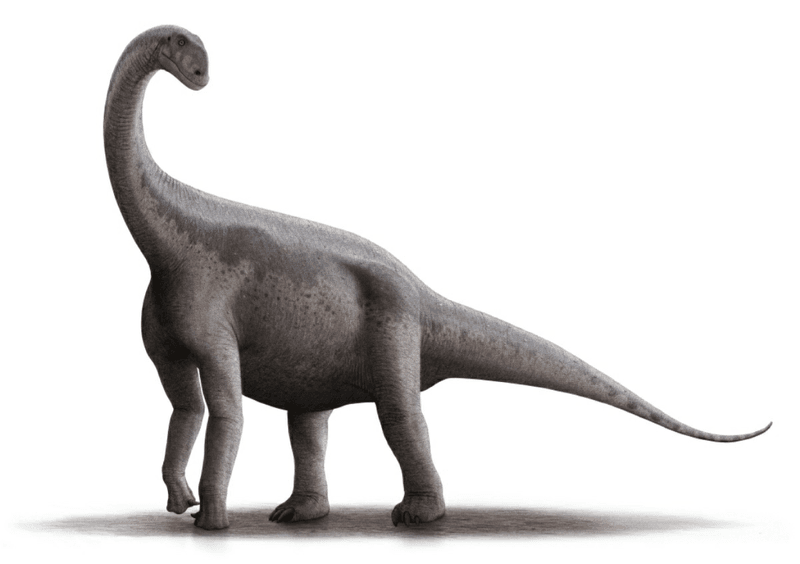
Jobaria was a moderately-sized long-necked dinosaur that roamed Africa during the Early Cretaceous period, named after the Jobar people of Niger, where its fossils were found.
While its neck was shorter compared to some of its relatives, it was still long enough for efficient foraging in the sparse vegetation of its arid environment.
Jobaria’s sturdy build and flexible neck played a key role in its survival. Its discovery has provided valuable insights into the diversity of sauropods in Africa and their adaptations to different ecosystems.
13. Amargasaurus
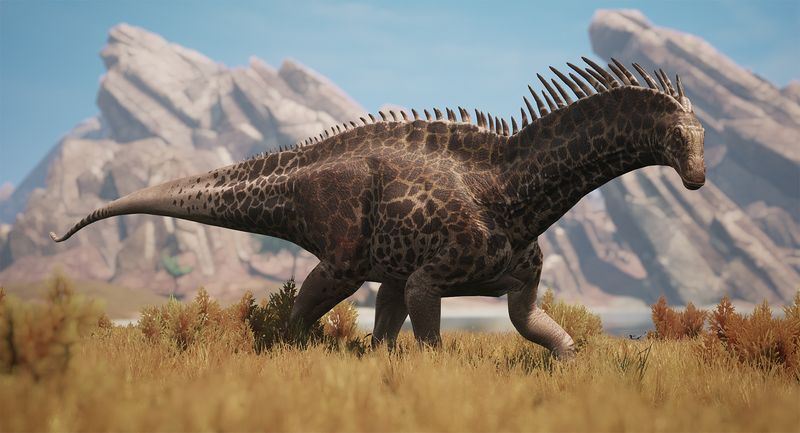
Amargasaurus was a unique long-necked dinosaur, known for the distinctive spiky structures running along its neck and back.
Living during the Early Cretaceous period in what is now South America, these spines may have been used for display, thermoregulation, or defense against predators.
Its long neck allowed it to feed on a variety of plants, making it an adaptable herbivore.
Though relatively small compared to other sauropods, Amargasaurus’ striking appearance made it a standout in its environment.
Its fascinating features continue to captivate paleontologists, offering valuable insights into the diverse evolutionary paths of dinosaurs.
14. Titanosaurus
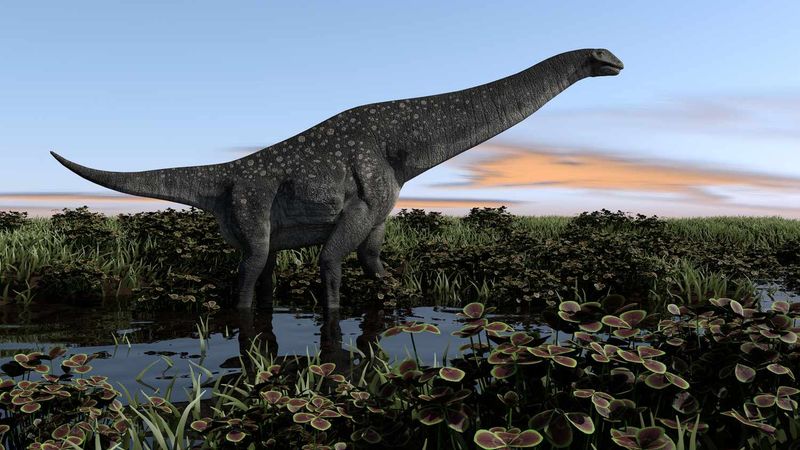
Titanosaurus was a diverse group of sauropods, known for their long necks and sturdy builds. Living during the Late Cretaceous period, these dinosaurs were found across South America, Asia, and Africa.
Their long necks allowed them to browse a variety of vegetation, from tall trees to low shrubs, while their massive size made them dominant herbivores that could deter predators.
The discovery of Titanosaurus fossils around the world has provided valuable insights into the evolutionary success and adaptability of sauropods.
Their ability to thrive in different environments showcases the widespread reach and diversity of these incredible dinosaurs.
15. Argentinosaurus
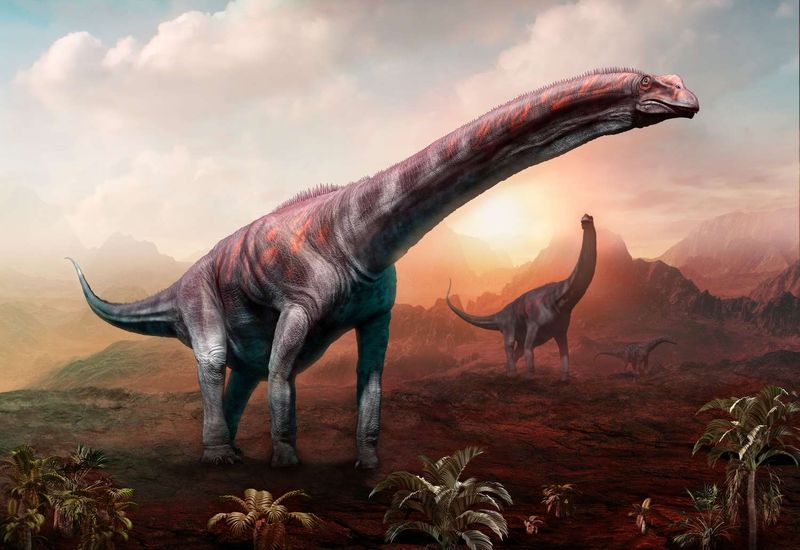
Argentinosaurus is one of the largest known dinosaurs, reaching lengths of up to 100 feet, and lived during the Late Cretaceous period in what is now Argentina.
Its long neck was a key adaptation for reaching and feeding on the abundant vegetation in its environment.
The sheer size of Argentinosaurus likely offered protection from predators, allowing it to dominate the landscape.
Despite its massive frame, it was probably a gentle giant, focused on grazing to sustain its enormous body.
Its impressive stature and the challenges of supporting such a size continue to captivate paleontologists and spark ongoing studies in the field.
16. Saltasaurus
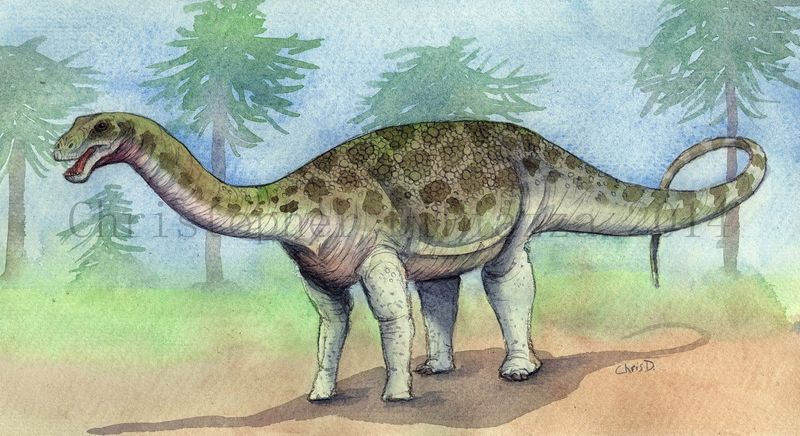
Saltasaurus was a smaller long-necked dinosaur compared to its giant relatives, yet it had some unique features that set it apart.
Living during the Late Cretaceous period in South America, it was known for its armored skin, with bony plates embedded along its back for extra protection against predators.
Its long neck allowed it to reach various plants, adapting to the rocky landscape. The discovery of Saltasaurus has provided valuable insights into the diversity of sauropods and their adaptive strategies.
Its combination of armor and agility makes it a fascinating subject for study, showcasing the variety of forms that long-necked dinosaurs could take.
17. Shunosaurus
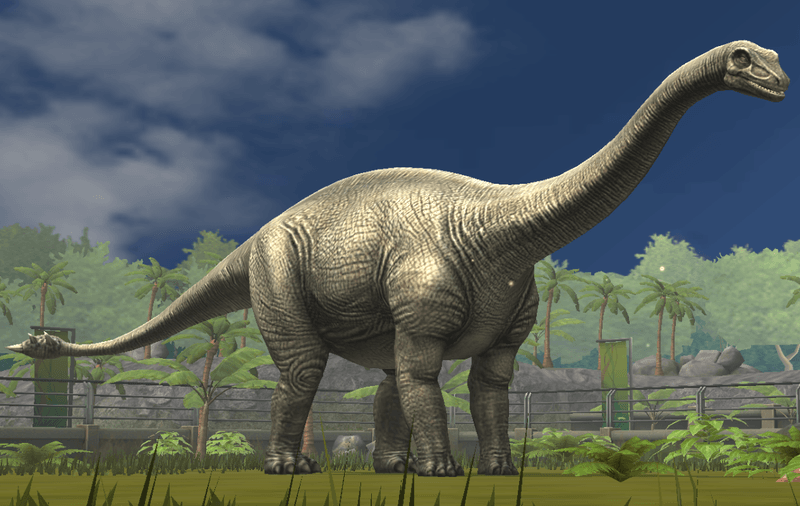
Shunosaurus is a fascinating long-necked dinosaur that lived during the Middle Jurassic period in what is now China.
Known for its long neck and distinctive tail club, a feature rare among sauropods, it had an impressive adaptation for feeding on a variety of plant life in its forested environment.
The tail club likely served as a defense mechanism against predators, adding an extra layer of protection.
Despite its moderate size, Shunosaurus was a well-adapted herbivore, showcasing the diverse evolutionary paths of sauropods.
Its unique features continue to intrigue scientists and offer valuable insights into dinosaur evolution.
18. Supersaurus
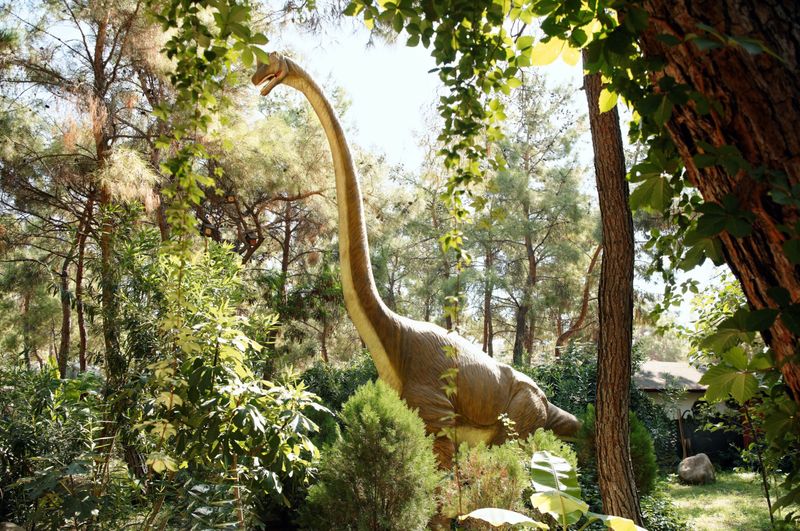
Supersaurus, aptly named for its immense size, is one of the longest dinosaurs ever known, with estimates suggesting lengths of up to 110 feet.
This massive sauropod lived during the Late Jurassic period in North America. Its long neck was perfect for reaching a wide variety of vegetation, helping it thrive in its environment.
The sheer size of Supersaurus likely protected it from most predators, as few would dare challenge such a giant.
Despite its colossal frame, it was probably a gentle giant, focused on grazing and coexisting peacefully with other herbivores, making it a fascinating subject of study for dinosaur enthusiasts.
19. Sonorasaurus
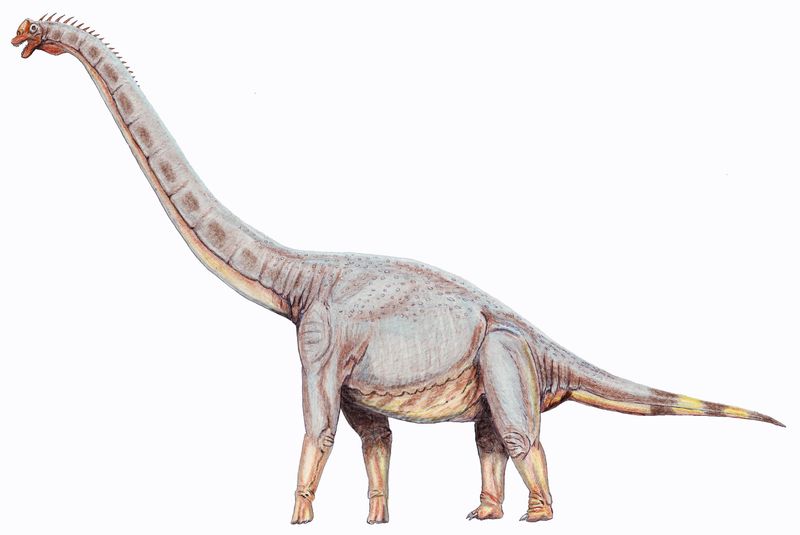
Sonorasaurus was a long-necked dinosaur that lived during the Early Cretaceous period in what is now North America, and it stands out for being one of the few sauropods adapted to desert-like environments.
Its long neck allowed it to reach the sparse vegetation in its arid habitat, making it a specialized herbivore. The ability of Sonorasaurus to thrive in such harsh conditions highlights the adaptability of sauropods.
Its discovery has provided valuable insights into the diversity of dinosaur habitats and survival strategies.
With its unique adaptations, Sonorasaurus continues to intrigue paleontologists exploring ancient ecological niches.
20. Dicraeosaurus

Dicraeosaurus was a distinctive long-necked dinosaur that lived during the Late Jurassic period in what is now Africa.
Unlike other sauropods, it had a relatively short neck, possibly adapted for feeding on low-lying vegetation. Its unique spine structure, likely used for display or thermoregulation, contributed to its striking appearance.
The discovery of Dicraeosaurus has deepened our understanding of the diversity within sauropods and their adaptability to various environments.
Its fascinating features continue to capture the interest of scientists, offering valuable insights into the evolution of these ancient giants.
21. Sauroposeidon
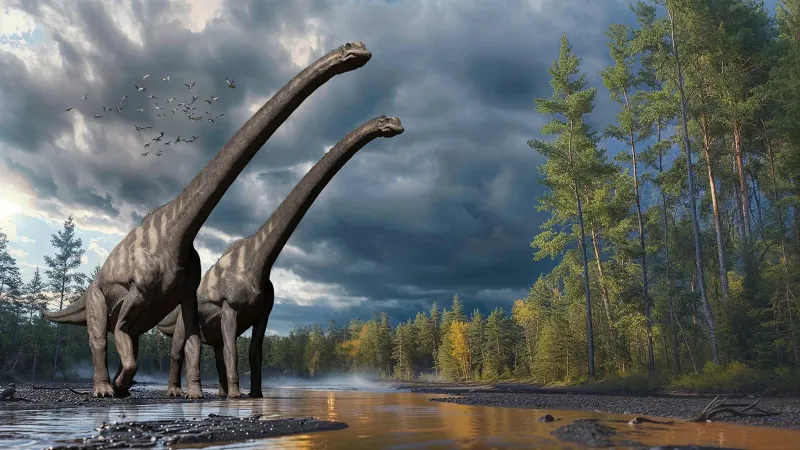
Sauroposeidon is renowned for its extraordinary height, with some estimates suggesting it could reach up to 60 feet tall.
This towering dinosaur lived during the Early Cretaceous period in what is now North America. Its long neck allowed it to feed on high vegetation, accessing food that other herbivores couldn’t reach.
The sheer height of Sauroposeidon made it one of the most impressive dinosaurs of its time, dominating the landscape.
Despite its massive size, it was likely a peaceful herbivore, coexisting with other dinosaurs and contributing to its ecosystem, continuing to fascinate paleontologists and enthusiasts today.
22. Vulcanodon
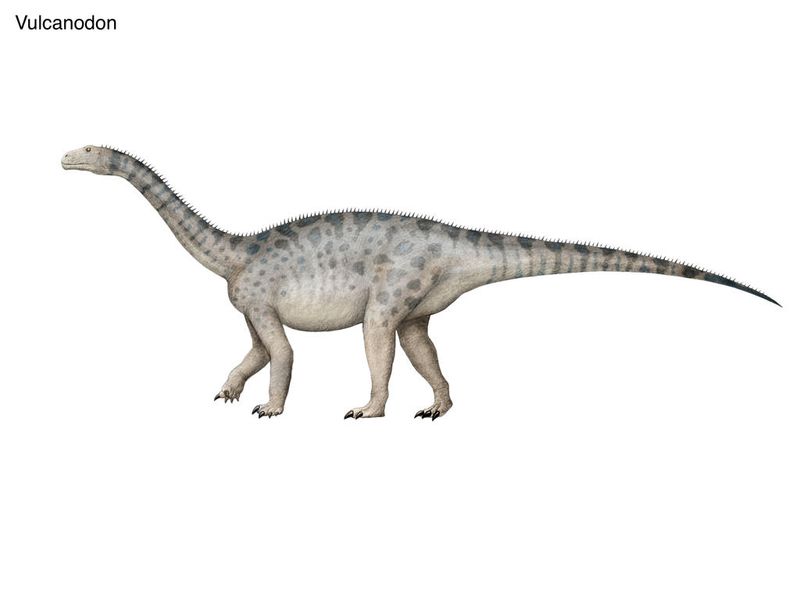
Vulcanodon was an early sauropod that lived during the Early Jurassic period in what is now Africa. Its long neck helped it feed on scattered vegetation in a volcanic landscape.
This dinosaur’s ability to adapt to challenging conditions highlights its resilience.
The discovery of Vulcanodon has provided key insights into the early evolution of sauropods. Its unique adaptations make it a fascinating subject for study.
23. Nigersaurus
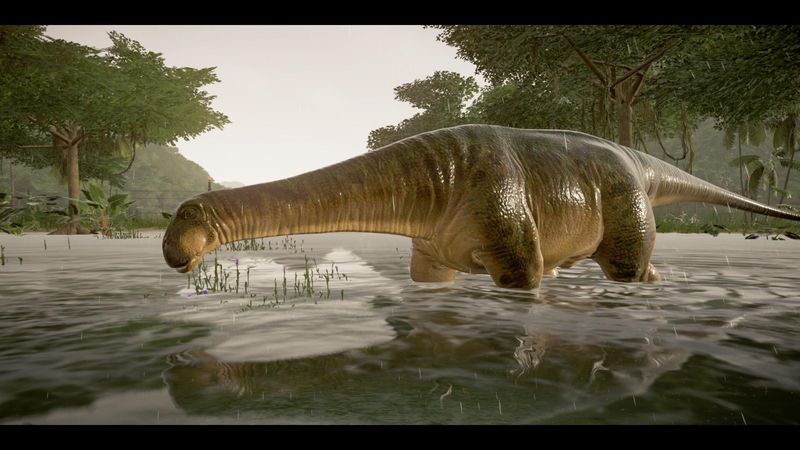
Nigersaurus was a unique long-necked dinosaur from the Middle Cretaceous period in Africa, known for its wide, flat mouth and specialized teeth.
Its long neck allowed it to graze along riverbanks, feeding on soft plants and aquatic vegetation.
With its unusual dental structure, Nigersaurus was a high-volume feeder, making it a specialized herbivore.
Its distinctive appearance and feeding habits offer valuable insights into sauropod diets and evolutionary strategies.
Nigersaurus’ unique adaptations continue to captivate scientists, making it a fascinating subject for studying prehistoric life.

